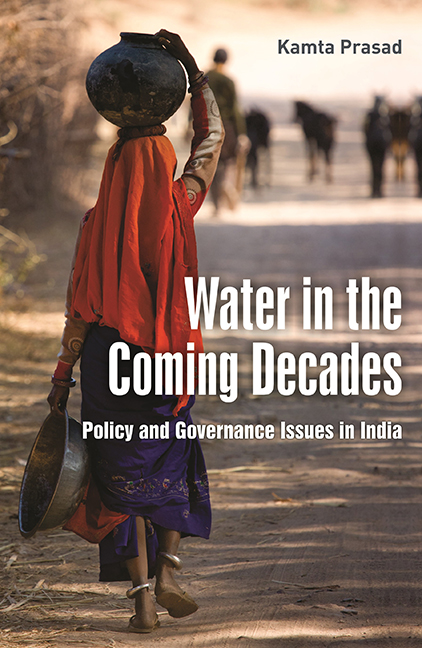Book contents
- Frontmatter
- Dedication
- Contents
- List of Tables
- List of Abbreviations
- Preface
- Acknowledgements
- Section I Overall Perspectives
- Section II Situational Analysis
- Section III Socio-economic, Institutional and Environmental Aspects
- Section IV Technological Options
- Section V Concluding Observations
- References
- Index
16 - Pricing: The Most Neglected Aspect
Published online by Cambridge University Press: 13 July 2022
- Frontmatter
- Dedication
- Contents
- List of Tables
- List of Abbreviations
- Preface
- Acknowledgements
- Section I Overall Perspectives
- Section II Situational Analysis
- Section III Socio-economic, Institutional and Environmental Aspects
- Section IV Technological Options
- Section V Concluding Observations
- References
- Index
Summary
Several problems in the water sector in India owe their origin to the lack of suitable policy on pricing of water. Aspects related to water pricing in surface and groundwater irrigation are, therefore, examined in this chapter. Surface irrigation, however, receives wider coverage since pricing with respect to canal or surface irrigation (which is also the major user of surface water) has been tried for a much longer period in India than that of groundwater irrigation. Issues related to pricing of domestic water supply are discussed in Chapter 7. In case of flood control projects, pricing has not been tried in India. After highlighting the importance of water pricing, the chapter indicates trends in financial return from surface irrigation projects followed by a discussion on subsidies in the irrigation sector and the need for reducing them by increasing water rates. Various issues involved in this are examined in detail. The chapter ends with a discussion on pricing of groundwater in India.
Role of water pricing
Pricing of water or fixation of water rates has a great potential in the management of both surface as well as groundwater resources. Pricing is linked to financing as it is a means for cost recovery and reducing subsidy, thereby making financial resources available for the development, operation and maintenance (O&M) of water resource projects. This indeed is the most visible role of pricing with which administrators and policy makers are familiar. The prospects for attracting private or other non-governmental finance to this sector are also linked to this aspect. Pricing has other functions also. It has an incentive role as it can be used as an instrument for water use efficiency and conservation. A prohibitively high rate for water guzzling crops, such as summer paddy, can help in reducing excessive use of water during the summer season, when water becomes scarce. Water pricing has an environmental role also, since pricing can be used as a means of safeguarding environment, as for example, for restricting over-exploitation of surface water or groundwater. Water has an intrinsic value, which can be assessed through its scarcity value or ecological cost of water withdrawal. This implies different rates for different areas depending upon the degree of scarcity in each area.
- Type
- Chapter
- Information
- Publisher: Foundation BooksPrint publication year: 2014



